 A&M Album Discography
A&M Album DiscographyA & M Records was founded by Herb Alpert and Jerry Moss in Los Angeles California in 1962. A &
M was a "middle of the road" music record company initially recording pop music almost exclusively.
Later through the efforts of Jerry Moss, the roster expanded to British rock groups and ground breaking
American groups. Starting with almost nothing (a couple of hundred dollars of pooled resources), Alpert
and Moss built the most successful independent record company in history, and sold the label to
PolyGram in 1989 for around a half-billion dollars.
Herb Alpert was born on March 31, 1935, in Los Angeles California. Herb was the second son of Louis
Alpert and his wife Tillie (Goldberg). Louis was Russian-born and a manufacturer of ladies' apparel. Tillie
was a bookkeeper in the Los Angeles department store, Whitehouse. In their home, music was the
primary source of recreation; Louis was proficient on the mandolin and Tillie played the violin. Herb's
older brother David played the drums, but Herb showed no interest in music until he was eight. Then he
used his allowance money to rent a trumpet. His parents were very encouraging, and hired a jazz
trumpeter named Harold "Pappy" Mitchell to teach Herb the instrument. By the age of 13, Herb was
being taught by Ben Klazkin, first trumpeter of the San Francisco Symphony, who encouraged him to
become a classical musician. Herb soon tired of classical music, and at age 15 formed a group called
the Colonial Trio with a drummer and pianist. After much practice, the group entered a local TV talent
contest program and won eight straight times, which allowed the Colonial Trio to secure paying gigs on
the weekends.
Alpert started at the University of Southern California as a music major, but after one year decided to join
the US Army. He was sent to Fort Ord, in Monterey California, for basic training. At the base he told
them he could play the trumpet and had been a sideman with Count Basie (not true) but he impressed
them enough to be allowed to organize a marching band.
While in the army he married his high school sweetheart. Herb became interested in jazz music,
listening to Clifford Brown, Charlie Parker and Miles Davis. He was discharged from the army in 1956,
returning to Los Angeles to again become a bandleader playing at balls and hotel parties. Alpert has
since characterized them as "the musical equivalent of pumping gas," but it was steady employment.
At about this time, he started writing songs. He met Lou Adler, an insurance salesman who sold Herb a
$10,000 life insurance policy, but confided to him that he wrote poetry and wanted to be a professional
lyricist. The two began writing songs together. Their first published effort was "Circle Rock," which was
recorded by the Salmas Brothers on Keen records, and later with more success by Sam Butera and the
Witnesses. In 1959, Andex, a subsidiary of Keen, issued the first recording by Herb Alpert — as
the Herbie Alpert Sextet. On that first disc [Andex 4036] "Hully Gully" was backed by "Summer School."
Alpert and Adler were hired by Keen Records as staff song writers at $35 a week. They started
supplying material to Keen recording artist Sam Cooke, and had some success with "All of My Life," and
a big success with "Wonderful World," which Alpert and Adler co-authored with Cooke. When Cooke left
Keen for RCA, Alpert and Adler also left, and turned to independent record production. They produced
Jan and Dean at Dore Records, but when Jan and Dean were soon enticed away by Challenge, then
Liberty records, Alpert and Adler were left with no artists to produce. It was at this point that Alpert and
Adler amicably split up and decided to go it alone. Adler founded Dunhill Records in 1964, made a great
deal of money selling the label a few years later, then started the Ode label.
Herb Alpert, on the other hand, now had a wife and baby (son Dore) to support, so he took work as an
athletics instructor, and even tried out as an actor at Paramount. Alpert studied acting while he continued
to write songs. He thought a couple of his songs were right for former Era Records' hit singer Gogi
Grant, by then with RCA. He submitted demos to her RCA producer, Dick Pierce, but Pierce liked
Alpert's singing, and recorded several songs for release on RCA under the name Dore Alpert. These
met with little success. By 1961, Herb Alpert was just barely in the music business, and it seemed that
he may soon have to give it up and get a "real" job.
Jerry Moss was born on May 8, 1935, in New York City. He was the second son of Irving and Rose
Moss. Jerry's parents were poor, living in the South Bronx area near Yankee stadium. He worked his
way through college, earning a Bachelor of Arts degree in English from Brooklyn College. After college,
he entered the U.S. Army and was discharged in August of 1958. He was hired by record promotion man
Marvin Cane at $75 per week to hype records to radio stations on the east coast. His first assignment
was to promote "Sixteen Candles" by the Crests. Moss didn't think much of the recording, but he worked
hard promoting the record up and down the east coast. In January, 1959, the song rose to the No. 2 spot
in the Billboard charts, due in large part to the efforts of Moss. Jerry Moss worked for a year and a half
with Cane, learning the "ins and outs" of record promotion. He left Cane and moved to California in the
spring of 1960, and became a record promo man on the West Coast. He was quite successful and
started producing records on the side.
In 1961, Moss met Herb Alpert, and was impressed with his trumpet playing. Moss asked Alpert to play
on a song he was producing called "Love Is Back In Style". Herb obliged and then shared with Moss a
song he had been working on called "Tell It To the Birds". Moss suggested that the two form a
partnership, and each put up $100. They called their new firm Carnival Records. In early 1962, they
released Carnival 701 "Tell It To the Birds" backed with "Fallout Shelter" under the name Dore Alpert.
The record attracted the attention of Dot Records who bought the master for $750 and released it on
Dot.
Using the money obtained from Dot, Herb Alpert rigged up a recording studio in his garage at 419
Westbourne Drive and Moss and Alpert started working on a song called "Twinkle Star" written by a
bandleader friend, Sol Lake. They took a break in the recording activity to attend their first bullfight in
Tijuana Mexico, hearing a Mariachi band triggered an idea for Moss and Alpert. Using the song "Twinkle
Star", Alpert overdubbed a second trumpet part directly on top of his original, but slightly out of sync, the
process which Alpert called "Spanish Flair" produced a startling effect, giving "Twinkle Star" a quasi-
Mariachi feel. Jerry Moss came up with the new title for the song, calling it "The Lonely Bull". Engineer
Ted Keep added authentic bullring crowd noises from a sound effects record and "The Lonely Bull" by
Herb Alpert and the Tijuana Brass was ready for release in August 1962. But they did have one problem:
they found out that they could not use the Carnival name because of prior usage by another record
company, so they used the first initial of their last names and called the company A & M Records.
In October, the record was shipped out of Alpert's garage, and Moss visited radio stations promoting the
record. "The Lonely Bull" started climbing the record charts; by the following February, the song had
moved into the Top 10, selling over 700,000 copies. A & M records was off to a spectacular start, and
the single was followed with an album of the same name that was a big seller. A & M soon had two
albums in the best selling album charts, The Lonely Bull and Herb Alpert's Tijuana Brass,
Volume 2. The offices of A & M Records were moved out of Herb's garage to 8255 Sunset
Boulevard in Hollywood.
Alpert's music was basically "middle of the road"; it reached out to an older, more traditional pop
audience that felt disenfranchised by the rock music of the day. Alpert was enjoying tremendous record
sales but he needed to tour to sustain his success, but there really wasn't any Tijuana Brass, the records
had been made by Alpert himself double-tracking his own trumpet. Herb Alpert then formed a real
Tijuana Brass by hiring some of the best musicians around, and took them on the road for concert dates
and television appearances. This exposure and two more hit records, "The Mexican Shuffle" and "A
Taste of Honey" propelled three Tijuana Brass albums into the charts simultaneously in 1965. Alpert won
four Grammy awards in 1965. By April, 1966, his fifth album, Going Places, was Number One
and his four other albums were all in the Top Twenty. To have five of the top 20 selling albums in the
country was an incredible accomplishment. In 1966, Herb Alpert and the Tijuana Brass sold 13 million
records. In 1968, Alpert got his first Number One single with a vocal performance called "This Guy's In
Love With You".
The success of the Tijuana Brass provided the financial basis for other A & M productions. The label's
roster in the mid-sixties included the Baja Marimba Band, Sergio Mendes & Brasil '66, Chris Montez,
Claudine Longet, the Sandpipers and We Five. All of these artists were successful and A & M outgrew
it's facilities on Sunset. On November 6, 1966, A & M relocated to the historic Charlie Chaplin movie
studio on La Brea and Sunset Boulevard.
In addition to the Tijuana Brass, all of the other artists on the label could be described as MOR
musically. If A & M was to continue growing, it had to sign artists outside of this narrow musical genre.
To do this, Jerry Moss went to England and met with British producer/manager Denny Cordell, signing
Cordell's clients Procol Harum, Joe Cocker, and the Move. He also made a licensing agreement with
Chris Blackwell of Island Records, which gave him rights in the United States to Spooky Tooth, Fairport
Convention, Free, Jimmy Cliff, and Cat Stevens. And he made a deal for the Strawbs and Humble Pie,
which later divided into the separate careers of Steve Marriot and Peter Frampton.
In the United States, A & M signed folk singer Phil Ochs, rock organist Lee Michaels, and country duo
Dillard and Clark. They also signed one of the greatest country rock bands ever formed, the Flying
Burrito Brothers. Their first album for A & M, The Gilded Palace of Sin, was not only one of the
best "first albums" by any group, but is arguably one of the best albums ever made "period".
After his success at Woodstock, A & M bankrolled the first US tour of Joe Cocker, called "The Mad Dogs
and Englishmen Tour". After the tour, Denny Cordell and Cocker were not enthusiastic about issuing a
record of the event, but Jerry Moss, who had a lot of A & M money invested already, hired the brilliant
producer-engineer Glyn Johns to try to get a record out of the tour recordings. In four nights, Glyn
selected and mixed a two-record set that Cocker and Cordell accepted, and the Mad Dogs and
Englishmen album sold over a million copies.
Alpert and Moss continued to grow the label, as A & M became one of the most respected labels in the
music business. Michael Goldberg in Rolling Stone Magazine called A & M, "a company that
became known as one of the classiest in the business where music really did come first. It was a
company known for its commitment to its artists".
During the 1970s and '80s A & M, grew to include singer-songwriters, rhythm & blues singers, comedy
acts, and rock groups such as Styx and Supertramp. A & M artist Peter Frampton sold more than 10
million copies of his 1976 album Frampton Comes Alive!. A & M developed multi-platinum
careers for the Carpenters, Cat Stevens, Carole King (on Lou Adler's Ode Label, which A & M
distributed), Quincy Jones, Captain and Tennille, Canadian singer-songwriter Bryan Adams, the Police,
Sting, Amy Grant and Janet Jackson. They also had a musically diverse artist lineup that included
Captain Beefheart, the Tubes, Joe Jackson, Suzanne Vega, John Hiatt and the Neville Brothers.
Herb Alpert maintained a sporadic recording career of his own. In 1978 he released a highly regarded
album in collaboration with trumpeter Hugh Masekela on the Horizon label. In 1978. Alpert also had his
second Number One single with the disco-tinged "Rise", which also sold over a million copies and won
his seventh Grammy award for the best pop instrumental performance of the year.
After 27 years of running A & M as an independent company, Alpert and Moss sold it to the PolyGram
Corporation in June of 1989. Alpert and Moss retained their music publishing company Almo/Irving
Music, but sold everything else for 500 million dollars, a very good return on their original 200 dollar
investment. Alpert and Moss continued in management posts with A & M/PolyGram but both left the
company in June of 1993.
By 1998, PolyGram themselves had been merged into Universal Music Group, and the owners of
Universal, Segrams, decided to cut costs. On January 21, 1999, Segrams fired virtually the entire A&M
staff, leaving the once-proud imprint as just another label reissuing relics of its past. What is amazing
here is that, just as we've seen time after time over the years, successful record labels headed by "music
people" can be run right into the ground when "corporate types" take over, and "the bottom line" (read,
cash flow for the stockholders) becomes the only criterion on which decisions are made. How does one
take a half-billion dollar empire and put it out of business in less than ten years? Frightening.
This discography covers the A & M label and the A & M distributed labels Dark Horse, Word (and
subsidiaries Myrrh and DaySpring), Gold Mountain, Horizon, I.R.S., Ode, and Vault.
This discography was developed using our record collections and Schwann catalogs from 1962 to 1982.
The A & M story was written from information available on the Herb Alpert & the Tijuana Brass Fan Club
web site, http://members.aol.com/lanesong/herbalpe.htm including "The Adroit Muse, The Artful
Merchant, and the Appetite for Music" by Timothy White. This discography was independently
researched in the year 2000 and absolutely no information on these pages was taken from Leslie J.
Pfenninger's book, From Brass to Gold (Greenwood Press, 2001).
Tracks on each album are listed in the order they appear on the album. An asterisk (*) before the record
number indicates we do not have information on the correct playing sequence of the tracks, and
consequently they are listed in alphabetical order for that album.
We would appreciate any additions or corrections to this discography. Just send them to us via e-mail. Both Sides Now
Publications is an information web page. We are not a catalog, nor can we provide the records listed
below. We have no association with A&M Records. Should you be interested in acquiring
albums listed in this discography (which are all out of print), we suggest you see our Frequently Asked Questions page and follow the
instructions found there. This story and discography are copyright 2001 by Mike Callahan.
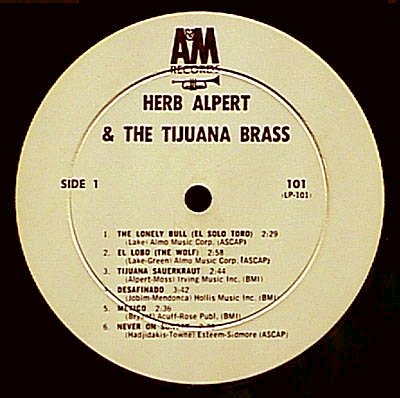 On to the A&M Discography, Part 1 SP 4101-4199 (1963-69)
On to the A&M Discography, Part 1 SP 4101-4199 (1963-69)
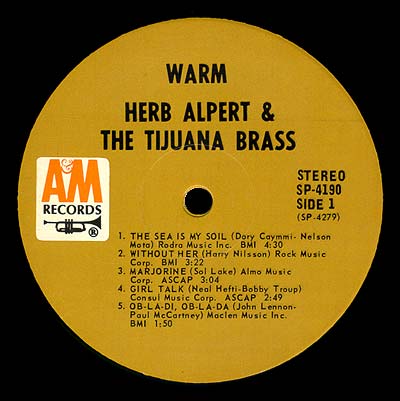 On to the A&M Discography, Part 2 SP 4200-4299 (1969-71)
On to the A&M Discography, Part 2 SP 4200-4299 (1969-71)
 On to the A&M Discography, Part 3 SP 4300-4425 (1971-74)
On to the A&M Discography, Part 3 SP 4300-4425 (1971-74)
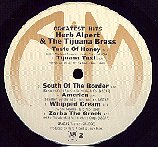 On to the A&M Discography, Part 4 SP 3600-3666 (1973-79)
On to the A&M Discography, Part 4 SP 3600-3666 (1973-79)
 On to the A&M Discography, Part 5 SP 4500-4599 (1975-76)
On to the A&M Discography, Part 5 SP 4500-4599 (1975-76)
 On to the A&M Discography, Part 6 SP 4600-4699 (1977-78)
On to the A&M Discography, Part 6 SP 4600-4699 (1977-78)
 On to the A&M Discography, Part 7 SP 4700-4799 (1977-80)
On to the A&M Discography, Part 7 SP 4700-4799 (1977-80)
 On to the A&M Discography, Part 8 SP 4800-4899 (1980-82)
On to the A&M Discography, Part 8 SP 4800-4899 (1980-82)
 On to the A&M Discography, Part 9 SP 4900-4999 (1982-84)
On to the A&M Discography, Part 9 SP 4900-4999 (1982-84)
 On to the A&M Discography, Part 10 SP 5000-5099 (1984-85)
On to the A&M Discography, Part 10 SP 5000-5099 (1984-85)
 On to the A&M Discography, Part 11 SP 5100-5199 (1985-88)
On to the A&M Discography, Part 11 SP 5100-5199 (1985-88)
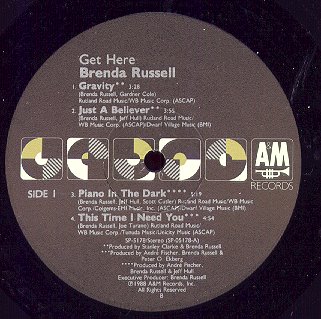 On to the A&M Discography, Part 12 SP 5200-5299 (1988-90)
On to the A&M Discography, Part 12 SP 5200-5299 (1988-90)
 On to the A&M Discography, Part 13 SP 5300-5403 (1990-92)
On to the A&M Discography, Part 13 SP 5300-5403 (1990-92)
 On to the A&M Discography, Part 14 PolyGram CD Series
(1992 - )
On to the A&M Discography, Part 14 PolyGram CD Series
(1992 - )
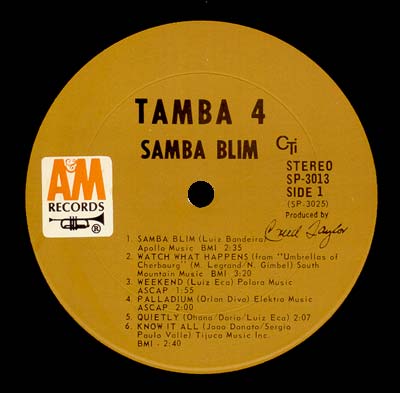 On to the A&M Discography, Part 15 SP 3000 A&M/CTI Jazz
Series (1967-74)
On to the A&M Discography, Part 15 SP 3000 A&M/CTI Jazz
Series (1967-74)
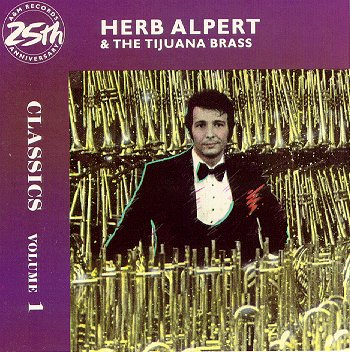 On to the A&M Discography, Part 16 SP/CD 2500 Classics
Series (25th Anniversary) (1987)
On to the A&M Discography, Part 16 SP/CD 2500 Classics
Series (25th Anniversary) (1987)
 On to the A&M Discography, Part 17 3100 Reissue Series
(1981-89)
On to the A&M Discography, Part 17 3100 Reissue Series
(1981-89)
 On to the A&M Discography, Part 18 SP
3200/3300/3400/3500 Series (1971-79)
On to the A&M Discography, Part 18 SP
3200/3300/3400/3500 Series (1971-79)
 On to the A&M Discography, Part 19 SP 3700 Series
(1973-85)
On to the A&M Discography, Part 19 SP 3700 Series
(1973-85)
 On to the A&M Discography, Part 20 SP 3900 Series
(1986-90)
On to the A&M Discography, Part 20 SP 3900 Series
(1986-90)
 On to the A&M Discography, Part 21 SP 6000-6700 Series
(1969-91)
On to the A&M Discography, Part 21 SP 6000-6700 Series
(1969-91)
 On to the A&M Discography, Part 22 SP 37000 Latin Series
On to the A&M Discography, Part 22 SP 37000 Latin Series
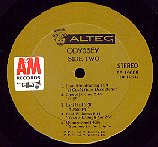 On to the A&M Discography, Part 23 SP 19000 Special
Products Series (1967-74)
On to the A&M Discography, Part 23 SP 19000 Special
Products Series (1967-74)
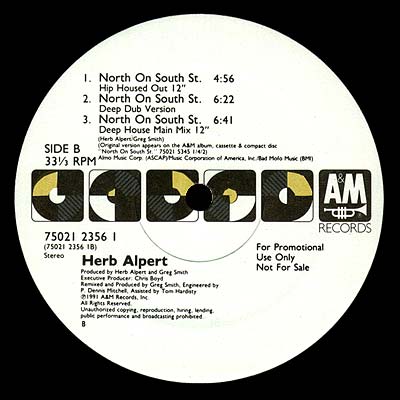 On to the A&M Discography, Part 24 Promotional Issues
On to the A&M Discography, Part 24 Promotional Issues
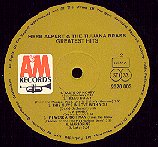 On to the A&M Discography, Part 25 Miscellaneous Series,
Imports, & Related albums
On to the A&M Discography, Part 25 Miscellaneous Series,
Imports, & Related albums
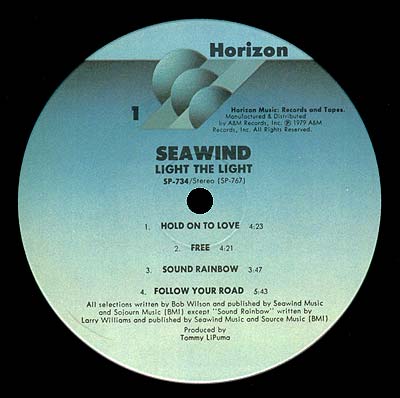 On to the A&M Discography, Part 26 A&M Horizon Jazz
Series
On to the A&M Discography, Part 26 A&M Horizon Jazz
Series
 On to the A&M Discography, Part 27 The Word Label
Reissues
On to the A&M Discography, Part 27 The Word Label
Reissues
 On to the Cypress Album Discography
On to the Cypress Album Discography
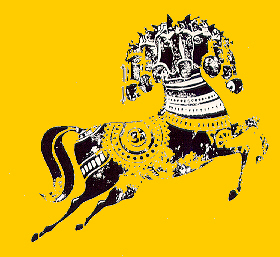 On to the Dark Horse Album Discography
On to the Dark Horse Album Discography
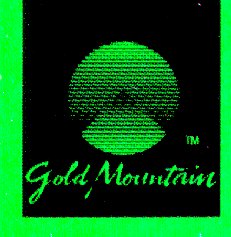 On to the Gold Mountain Album Discography
On to the Gold Mountain Album Discography
 On to the I.R.S. Album Discography
On to the I.R.S. Album Discography
 On to the Ode Album Discography
On to the Ode Album Discography
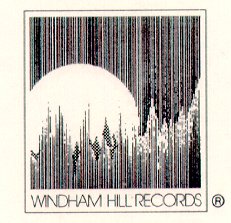 On to the Windham Hill Album Discography
On to the Windham Hill Album Discography
 On to the Word Label Story and Discography
Includes related labels
On to the Word Label Story and Discography
Includes related labels
 Back to the Discography Listings Page
Back to the Discography Listings Page  Back to the Both Sides Now Home Page
Back to the Both Sides Now Home Page